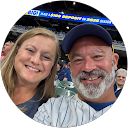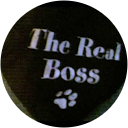Shuffleboard Table Buyers Guide: Everything You Need To Know To Make An Informed Decision

Overview:
Our Shuffleboard Table Buyers Guide will help you navigate the process of buying the perfect Shuffleboard for your lifestyle and budget. Given the myriad of options and price points for Shuffleboard Tables, the process of researching and selecting a table can be a bit daunting. This Shuffleboard Table Buying Guide will help you make an informed decision on what is, in most cases, a once in a lifetime purchase.
The Basics – Shuffleboard Table Components:
Understanding the three components that are part of every Shuffleboard Table will help you better understand the information in The Shuffleboard Federation’s Shuffleboard Table Buyers Guide. The most important component the is playing surface, the actual slab of Butcher Block Maple that is the heart of every Shuffleboard Table. Playfields are generally one-piece, but are also available in a two-piece configuration. More about that later in this informational document.
The Playfield sits in the part of a Shuffleboard Table that is referred to as the Cradle. The Cradle is usually 16″ longer than the Playfield. So, a 16′ Shuffleboard Table has a 14′ 8″ Playfield. Shuffleboard Tables that are 9′ in length or less are almost always one single piece. Some 12′ Shuffleboards have one-piece cradles and other come in two 6′ sections. Ditto for 14′ Shuffleboards, a few come with one-piece cradles, but the overwhelming majority of them come in two 7′ sections. Longer Shuffleboard Tables, those measuring 16′, 18′, 20′ and 22′ always have two-piece cradles, which are 8′, 9′, 10′, and 11′, respectively. Here at The Shuffleboard Federation, we also offer custom lengths to help you maximize the available space in your game room.
The final component is the legs. Though they are self explanatory, there are a few considerations. Most of our tables come with solid wood legs. A couple of our contemporary Shuffleboard Tables, like the Hudson Metro, have cradles and legs that are made from powdered coated steel. The Metro also comes in a Stainless Steel version. Both versions of the Metro are extremely well built and sturdy. Some other models with steel legs include the very popular Williamsburg and Astoria, both made by Venture Shuffleboard. The position of the legs is rarely discussed, but is important. We prefer that the legs at each end of the table are as close to the end of the cradle as possible, for maximum support.
Our Brands:
We evaluated dozens of companies during the process of selecting the four brands we sell, Champion Shuffleboard, Hudson Shuffleboards, Venture Shuffleboard, and Heirloom Shuffleboards. In addition to being well-established, highly reputable companies, with strong warranties, that manufacture their Shuffleboard Tables in the USA, this Shuffleboard Table Buyers Guide will provide insights as to why we have selected these particular companies. It’s important to note that The Shuffleboard Federation is uniquely qualified to assess Playfield quality. Company Founder, John McDermott, was rated in the top ten players in the world for 30 straight years. His background makes him especially well qualified to evaluate quality, especially where there is a direct correlation to playability.
Shuffleboard Tables come in two broad categories, Regulation Style Shuffleboards and Entry Level Shuffleboards. Regulation Style Shuffleboard Tables have Playfields that are 20″ wide and 3″ thick. Regulation Style is not to be confused with Regulation Length, which is 22‘. Entry Level tables have playing surfaces that are 16″ wide and 1.5″ to 1.75″ thick. They are available in lengths of 9′, 12′, and 14’.
Regulation Style and Entry Level Shuffleboard Tables are made both domestically and overseas. At The Shuffleboard Federation, we exclusively carry Made In The USA Shuffleboard Tables and Table Shuffleboard Accessory Products. We make most of the accessory products that we sell, which are sold direct to the consumer, with no middleman. In terms of quality, Shuffleboards Made In The USA are far superior to imported tables, albeit at a significantly higher price. While imported tables often look great in pictures, they are notorious for poor quality playfields with significant warping issues.
Shuffleboard Table Length: Choosing The Right Size
What is the best length for a home Shuffleboard Table is one of the most frequently asked questions we receive. The answer depends on the size and layout of your room. While having two feet of room at the each end of the table is enough room to stand and shoot, three feet is more comfortable. Anything more than that is a bonus. Shuffleboard Table lengths always refer to the complete end to end dimension. The actual playing surface is generally 16″ shorter than the overall length. So, a 12′ Shuffleboard Table, which is one of the most popular sizes for a residential Shuffleboard Table, has a Playfield that is 10′ 8″ long.
Though a Shuffleboard Table can be placed right up against a wall, playing will be a little more comfortable is you can position it 6″ to 8″ away from the wall. That little bit of extra space results in plenty of elbow room and a more comfortable playing experience.
Playing Surface (Playfield)
Champion Shuffleboard, the world’s oldest and largest Shuffleboard Table manufacturer, utilizes tongue and groove construction when building their playing surfaces. They mill two grooves which run the full length of each board in their playfields. The grooves result in more surface area, allowing Champion to use more glue, resulting in exceptional strength and structural integrity. Champion builds their tables in the Dallas/Fort Worth area, in a 170,000 square foot, state-of-the-art manufacturing facility.

Hudson Shuffleboards, the fastest growing company in the Shuffleboard Table business, has built their company by offering high quality at an unbeatable price. In addition to finger jointing the butts ends of the individual pieces of wood in their playfields, Hudson Shuffleboards is the only company that uses Maple inlays on the underside of their playing surfaces to provide additional strength and reinforcement at the location of each Climatic Adjuster.

Venture Shuffleboards uses finger jointed, premium quality hard Maple in all of their playfields. Venture finishes their playing surfaces with seven coats of hard, clear synthetic lacquer. This results in a playing experience akin to that of the traditionally finished tables of a by gone era. This second generation family company has stayed true to its roots by doing things the old fashioned way.

Heirloom Shuffleboards uses the highest quality materials of any company in the Shuffleboard Table business. Heirloom playfields are completely hand made from edge grain Canadian Maple, for unparalleled beauty, strength and durability. Heirloom is the only company in the industry to offer both traditional lacquer finishes, and modern polymer finishes. Heirloom Shuffleboards offers quality as timeless as the game itself. Heirloom Shuffleboard Tables make a statement that old-world craftsmanship is alive and well, and available for those discerning individuals who appreciate the finer things in life.

Two-Piece Playfields:
Two-piece playfields allow you to get a longer Shuffleboard Table into a room in which a one-piece Playfield cannot go into, due to turns in a staircase or tight turns in a hallway. They are also a great option if your Shuffleboard Table is going into an upstairs room, in which case a one-piece Playfield may be too heavy to get into the space. The two-piece Playfield was invented by Champion Shuffleboard in 2010, at which time they applied for a patent. The patent for this game changing option was issued on 5/14/2013. Two-Piece Playfields are originally built as a single, contiguous playing surface, then cut in half. This ensures that, where the two sections come together, there is continuity of color and wood grain.
Climatic Adjusters:
The playing surface (Playfield) of a Shuffleboard Table is made of wood and will change to its climate. More humid conditions will cause the Playfield to expand and dip and become more concave. Drier conditions will result in the Playfield contracting, and becoming convex, or “high centered”. Climatic adjusters are used to create ideal the concave shape of playing surface.
Depending upon length of table, number of adjusters will vary but tend to be located approximately every 3 or 4 ft along underside of table, beginning one foot from each end of board If too concave, weights (pucks) will take an “S” path down the board. If too convex, weights will be difficult to cross the center and will dump off the rails into the gutters.
Shuffleboard Table Playfields should ideally be slightly concave. This helps keep the weights/pucks on the board and creates some extra fun and excitement, by allowing a player to go around their opponents weight and hide behind it. Comparing shuffleboard to golf, as I often do, can you imagine how boring golf would be if all the greens were perfectly flat!
Climatic Adjusters date back to the late 1940’s, when Paul Cusano, president of American Shuffleboard Company, created his “Warpage Correction Device” in December, 1947, and applied for a patent thereon, this device being marketed by the American Shuffleboard Company as “Climatic Adjusters” – Patent Number 2.479.477 – lever-type adjuster. Shortly thereafter, In November of 1948, Rock-Ola Shuffleboard created and marketed its similar device, known as “Rock-Ola Climatic Equalizers”, which triggered a prolonged legal dispute between two of the shuffleboard manufacturing heavyweights. In 1948, Rock-Ola Manufacturing was awarded new Patent Number 2,493,620 in Jan 1950, to cover design of their bar-type adjuster.
All of the Shuffleboard Tables we sell include Climatic Adjusters. Champion Shuffleboard and Hudson Shuffleboards both use their respective Climatic Adjusters to setup their playfields to be slightly concave before they ship their shuffleboards. How much concaveness is best? That is a personal preference decision. Major Table Shuffleboard tournaments usually have about 18 thousandths of an inch of concaveness at the ends of the table, tapering down to 12 thousandths of an inch in the center of the table.
Scoring System Options:
What is the best way to keep score in Table Shuffleboard is a commonly asked question. Fortunately, The Shuffleboard Federation offers a wide range of choices, including both manual and electronic scoreboards. To see all of the options, click Shuffleboard Table Scoreboards. We highly recommend that you go with an electronic scoreboard, if possible. Electronic Shuffleboard Scoreboards come in a wide variety of styles, sizes and price points. While manual scorekeepers, like Abacus Style units keep score just fine, an electronic scoreboard make the game more engaging, especially if you’re playing with your kids. All of our Shuffleboard Tables have multiple score keeping options. You can also add many of our scoreboards to an existing table. Whichever options works out best for you, remember, Play Shuffleboard, it’s a great way to spend quality family time and make memories that your children will cherish.













































































